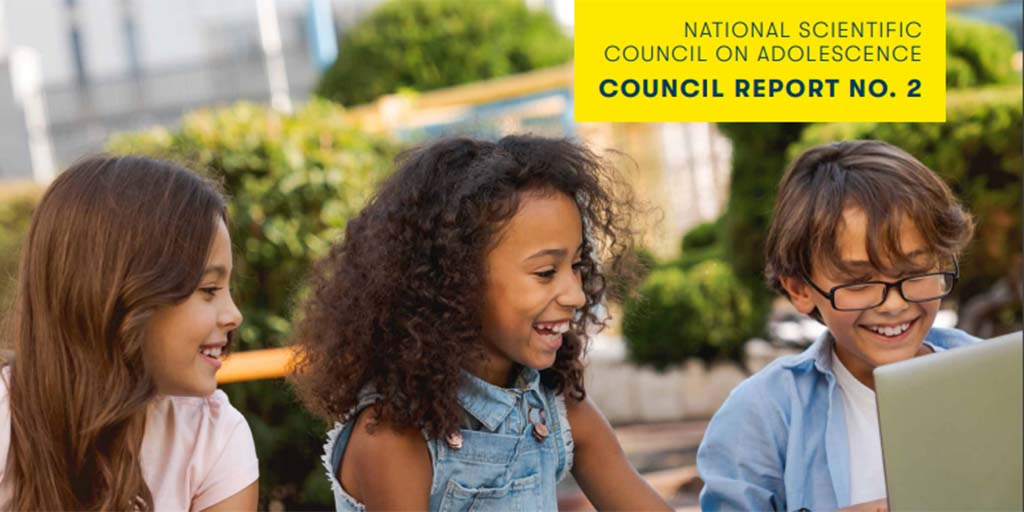
How do we promote positive development and decrease the risks of social media for tweens? According to a new report, it starts with reevaluating the way we think about digital technology.
The National Scientific Council on Adolescence, part of the UCLA Center for the Developing Adolescent, recently released a new report titled “Engaging, Safe, and Evidence-Based: What Science Tells Us About How to Promote Positive Development and Decrease Risk in Online Spaces for Early Adolescents.”
The report is focused on recommendations related to social media use by early adolescents, defined as ages 10-13. It's a lengthy read at 32 pages, but we’ve distilled the major takeaways for you here.
Early adolescence is the perfect storm of expanding independence, high curiosity, low emotional regulation, and particular susceptibility to social influence.
The report's authors note that young adolescents are going through a major learning period. During that period, they begin figuring out complex social situations, testing adult limits, and questioning their identities.
“As they go through these changes, young adolescents are especially sensitive to external social and emotional influences, and compared to older adolescents, they are not as able to regulate their responses to these influences.”
Social media companies aren’t considering this age group when they build their platforms and features, because technically they shouldn’t be using their platforms.
The minimum age for all users is 13 for most social media platforms. However, social media use increases dramatically during early adolescence: 38% of 8- to 12-year-olds use social media.
It’s both — and whether it’s more bad than good (or vice versa) for your child depends on a variety of factors.
According to the report, social media’s opportunity for good includes:
Opportunities for harm include:
The UCLA researchers offer several specific recommendations, grouped into four categories.
Digital technology should scaffold healthy development and promote wellness.
Digital technology used by young adolescents should incorporate and advance the best available research as part of its design and evaluation process.
Digital technology used by young adolescents should incorporate and advance the best available research as part of its design and evaluation process.
All young adolescents should have reliable access to the level of digital connectivity and devices required to fully participate in their education and learning.
The report goes into great detail about each of these four recommendations, and you can also watch a panel discussion on the report on YouTube to learn more.
This report highlights the fact that any progress in this direction requires tech platforms to either prevent tweens from using their products, or acknowledge they’re part of their user base and make design, data collection, and targeting decisions with their best interests in mind. In the meantime, it's essential for parents to stay informed about what their kids encounter online. BrightCanary is a social media monitoring app that shows you what your child encounters on Instagram, TikTok, Google, and YouTube, as well as text messages on Apple devices.
Tech platforms have a long way to go before they’re appropriate, let alone empowering, for tweens. But parents need accessible tools and settings that help them keep their children safe online sooner, rather than later.